Our guide Tam dug into the plastic bag and brought out a huge fistful of sticky rice. In true "dinner lady" style he dolloped a lump in front of each of us. Our feast was spread out before us on two banana leaves cut freshly from the jungle. Smoked aubergine; spicy river fish; greens with herbs; and most delicious of all roasted bamboo. It was all very tasty when you took a small lump of sticky rice with your fingers and dipped it in the small flavoursome portions. Dogs and chickens crowded under the table of the little hut, launching themselves at the discarded fishbones. Our two guides, slurped their way appreciatively through the meal, as did we. Halfway though our hike through Nam Ha National Park, we had all been hungry. After eating our fill, Tam produced desert. Which was, guess what? Yes, more sticky rice, steamed in a banana leaf with coconut. Also delicious and we were very well fuelled for the next stage of the walk. It turns out that sticky rice, is not what happens when you overcook boiled rice, but a whole different, far more appetising variety.

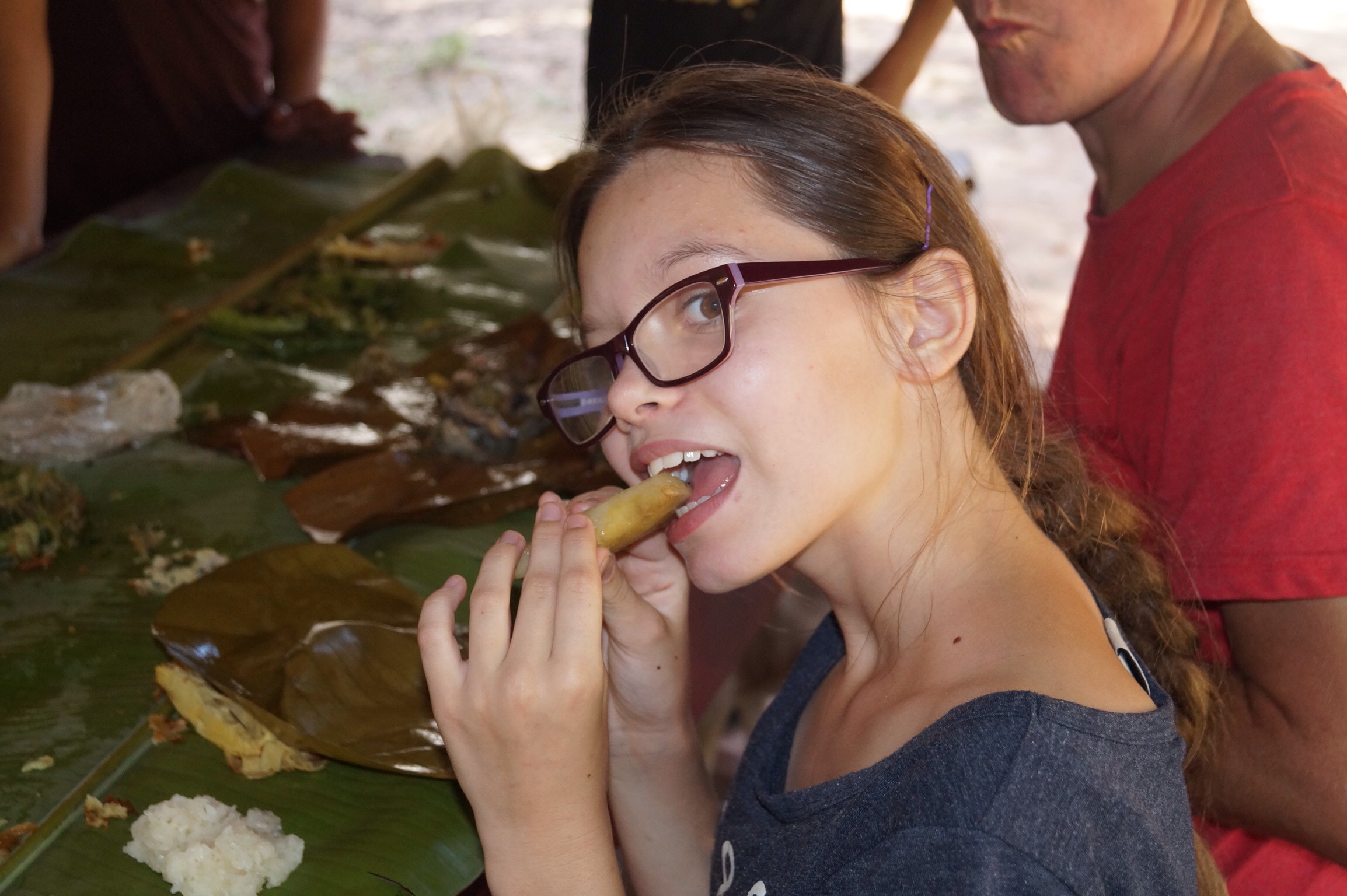
We had stopped for lunch beside the river in a Khamu, a hill tribe, village in the middle of the jungle. As it was rice harvesting time, most of the villagers were working out in the fields but there were a few shy but friendly children about as it was the weekend. As part of an ecotourism community project, the village welcomes hikers with a guide to look around. The houses were raised on stilts with livestock underneath; chickens scratched around; and rice stores that looked like small houses were away from the houses in the vegetable gardens. The Khamu are animists and we were shown the bamboo sign they put up on the paths in, to show then the village is closed for ceremonies.

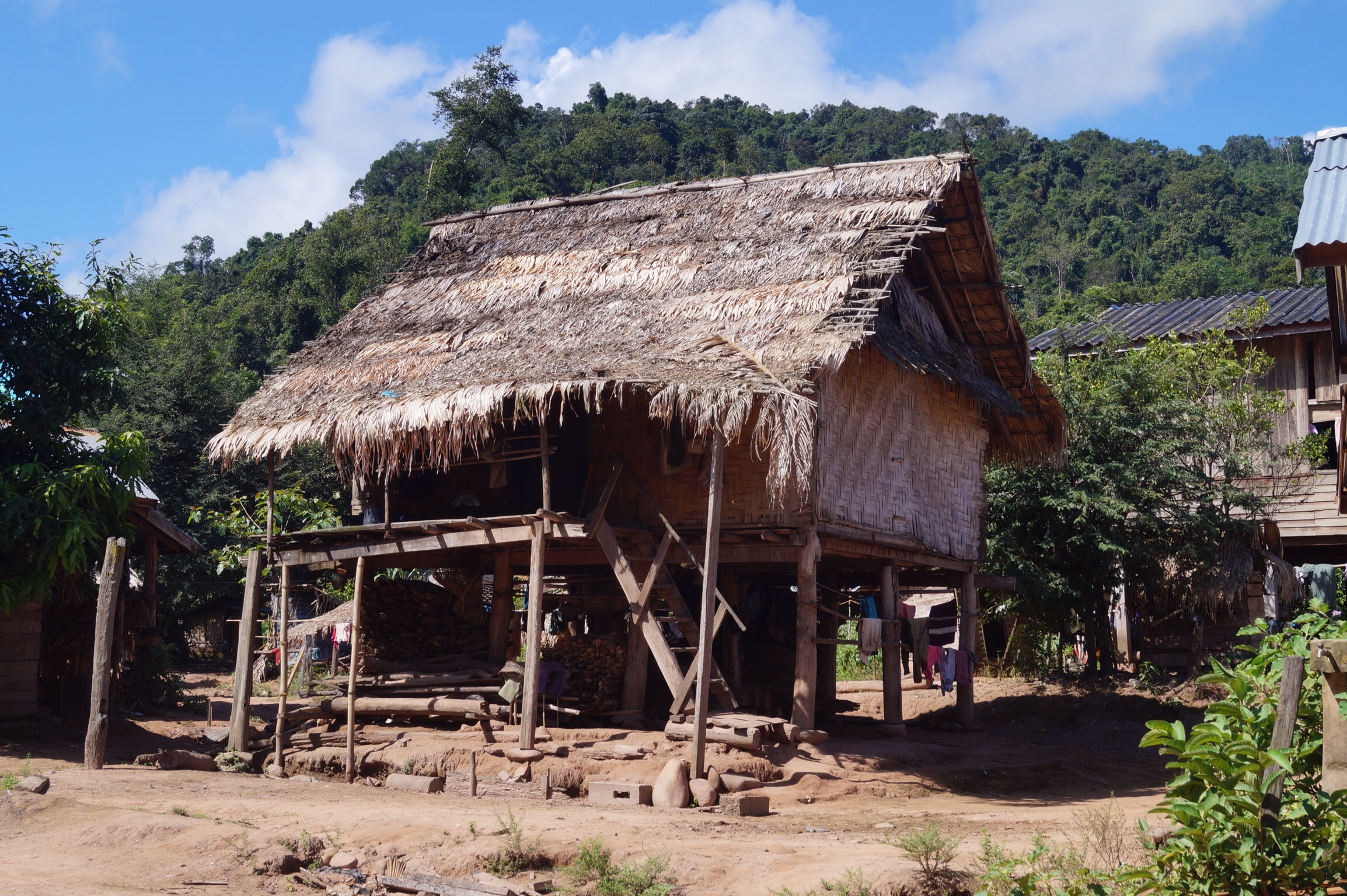
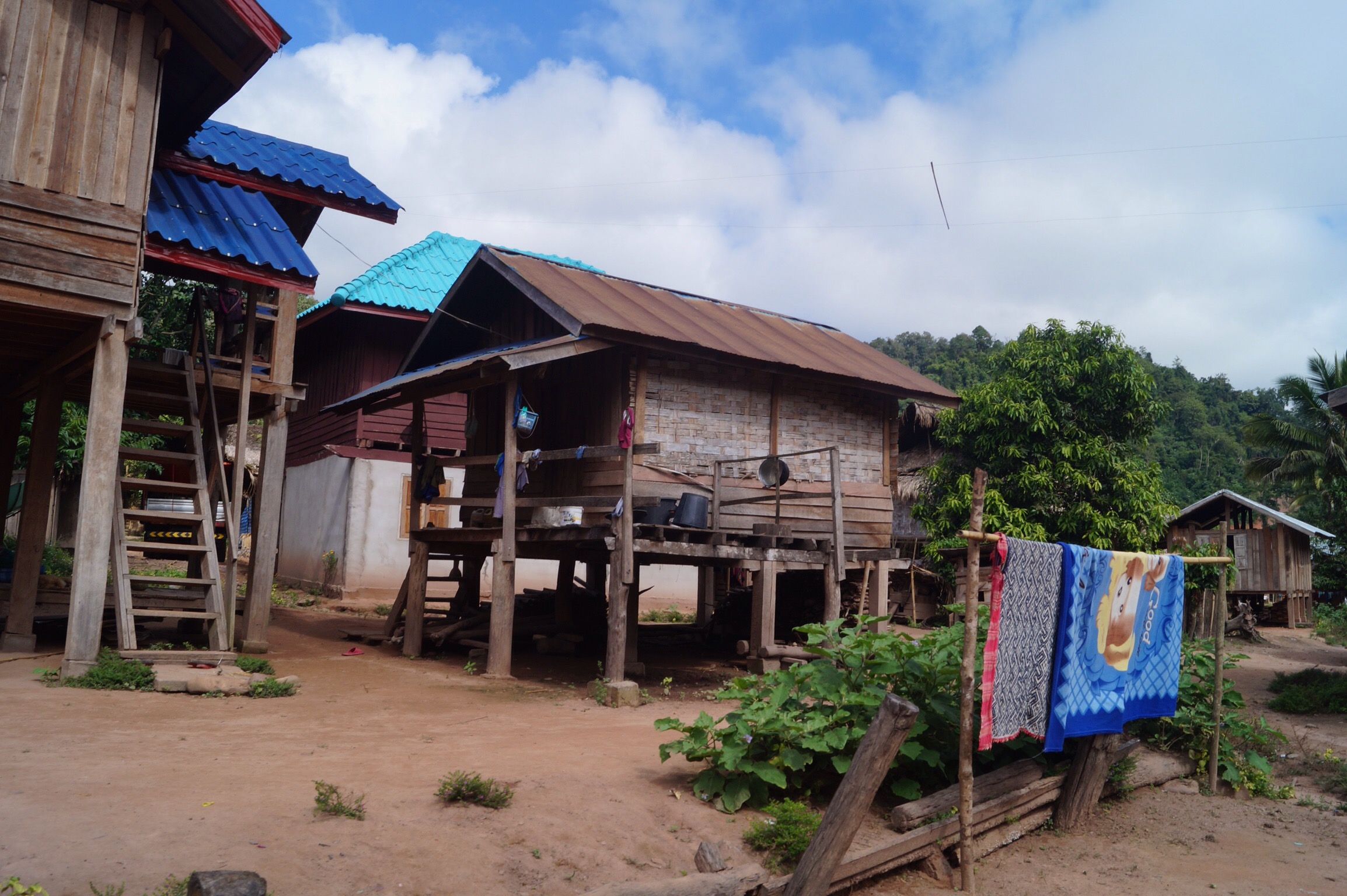
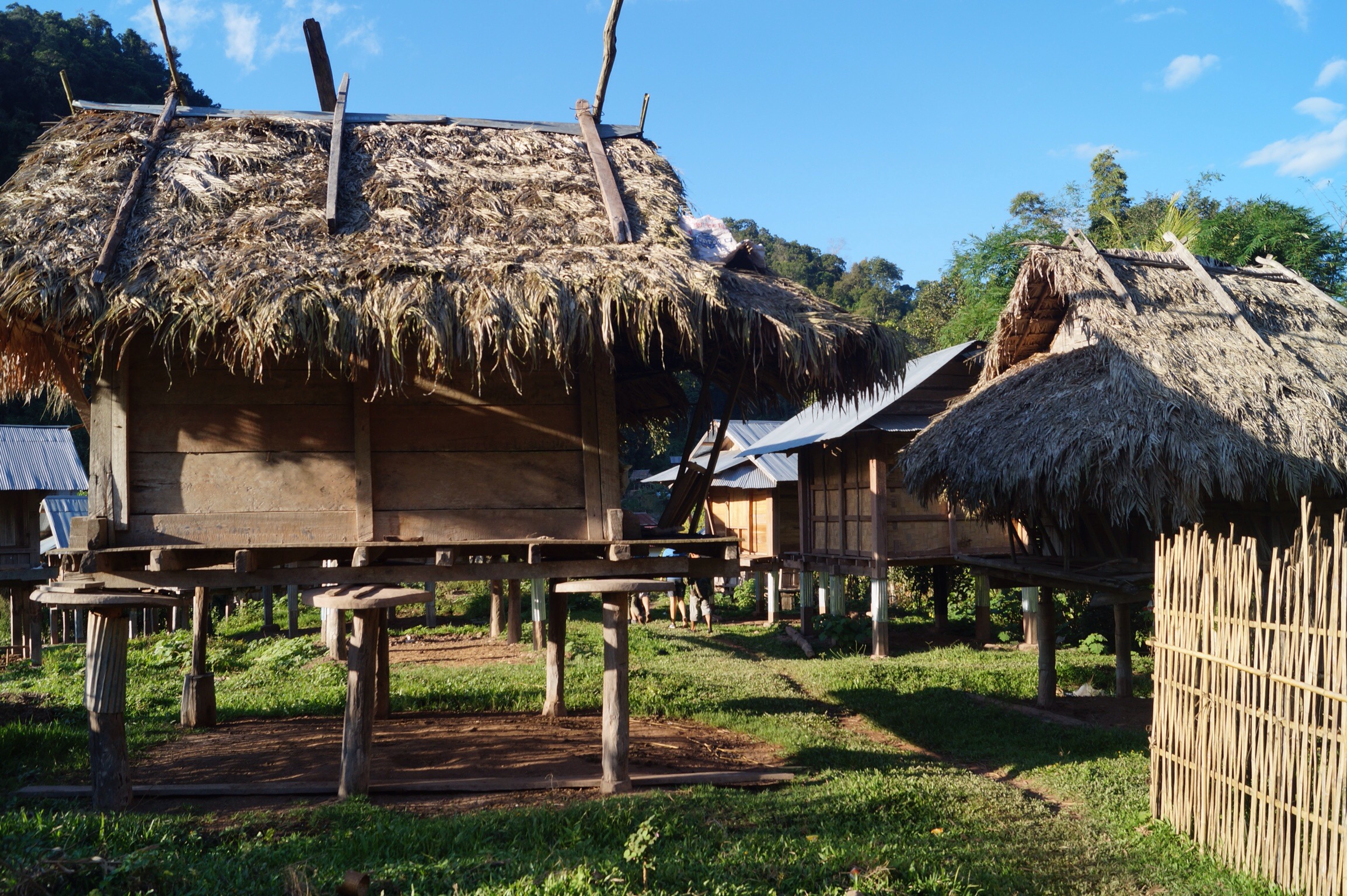
With our bellies full of sticky rice we continued our 16km trek through the primary rainforest. The girls did a great job walking on the muddy path and enjoyed chatting with the friendly young Australian couple that were with us. In the last kilometre back to the road, we heard giggling and chatting from the undergrowth, the universal sound of a group of teenagers hanging out. Eventually our paths merged and they slid out in front of us - literally, due to the muddy slope. They were bringing sacks of recently harvested rice from the village we had had lunch in. They were delighted to see a little blonde girl, after a bit of giggling and egging on as we all headed down the slope, they asked if they could take a picture with Lucy on a phone they had.
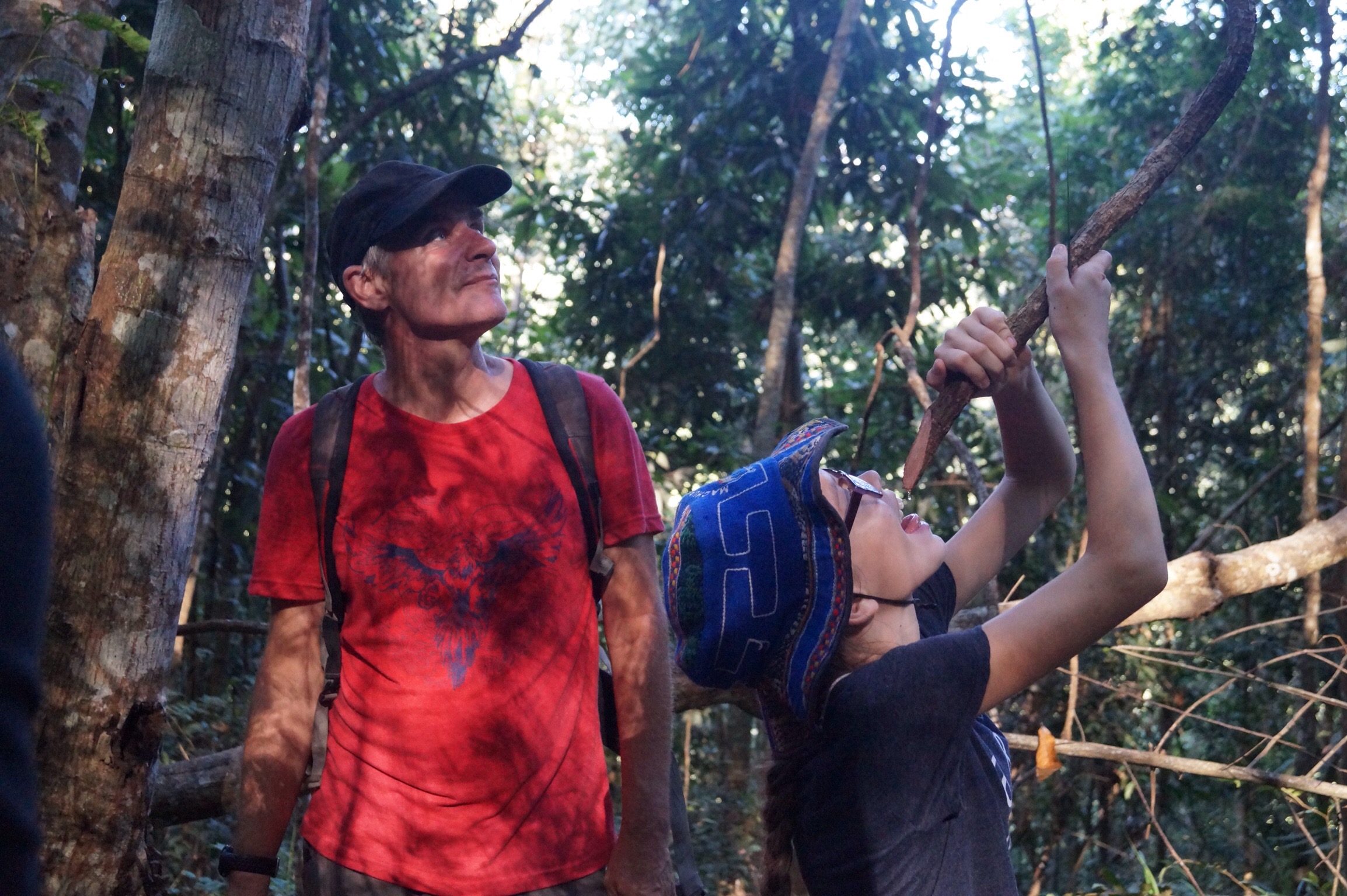
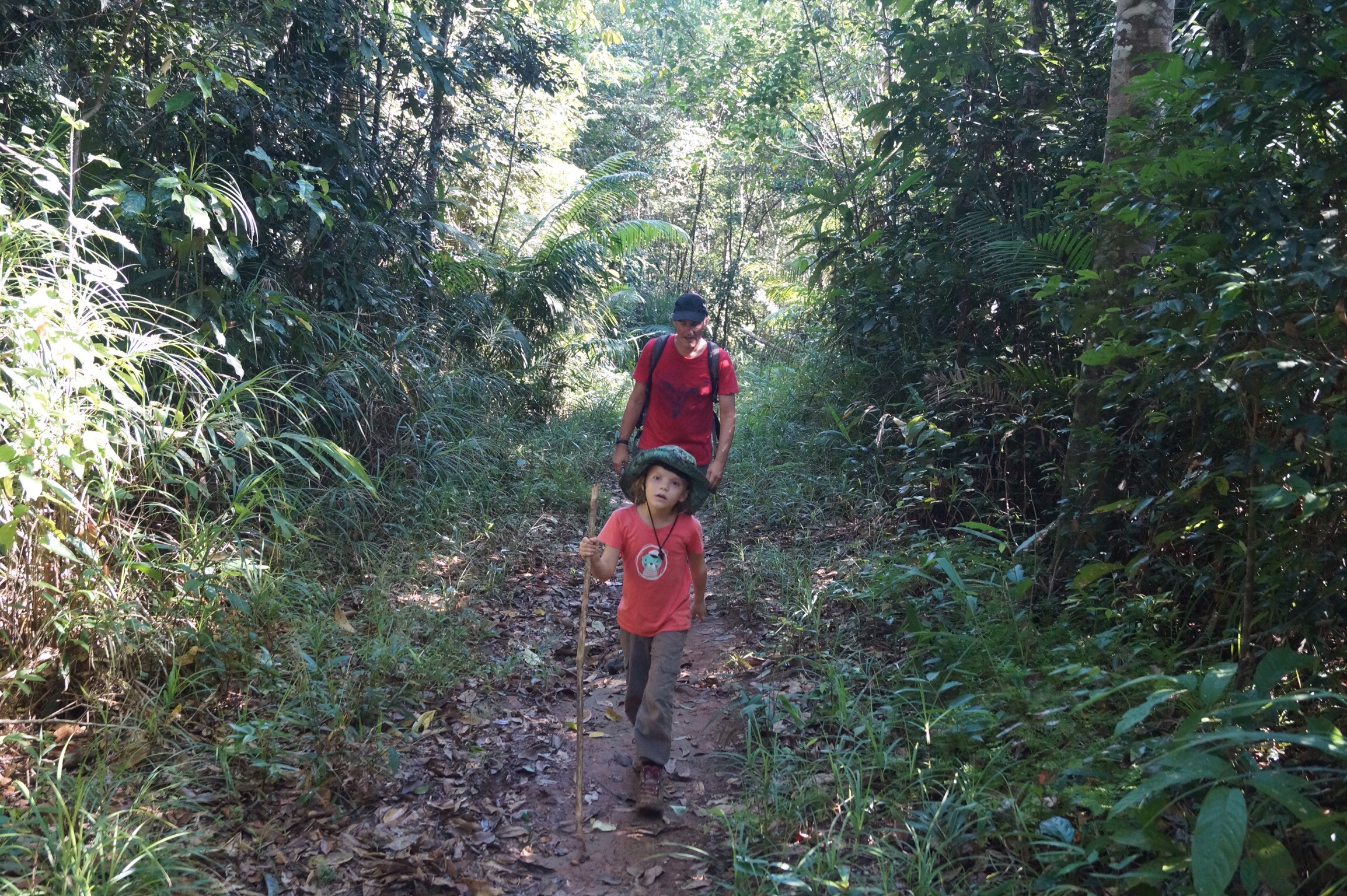
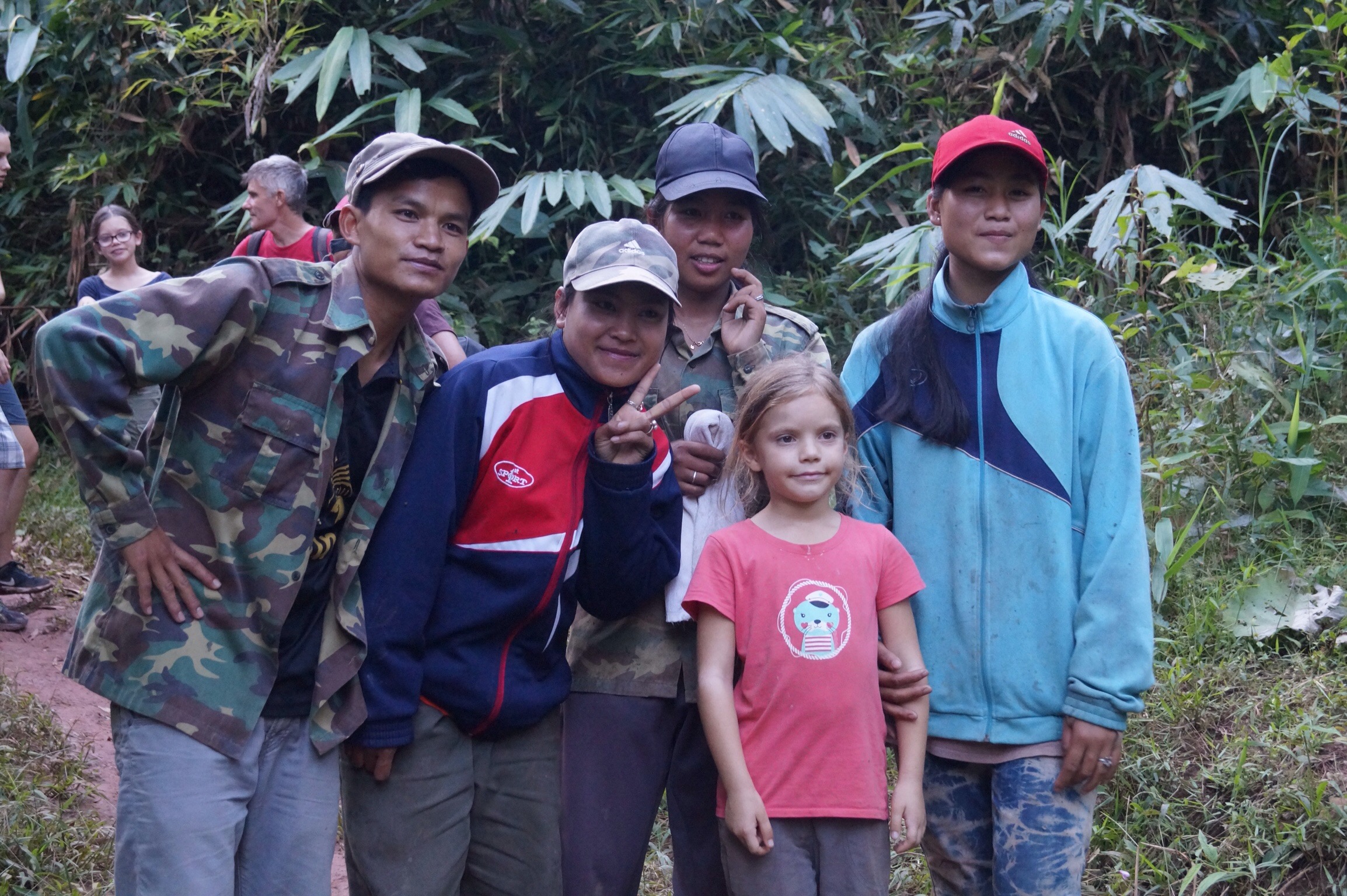
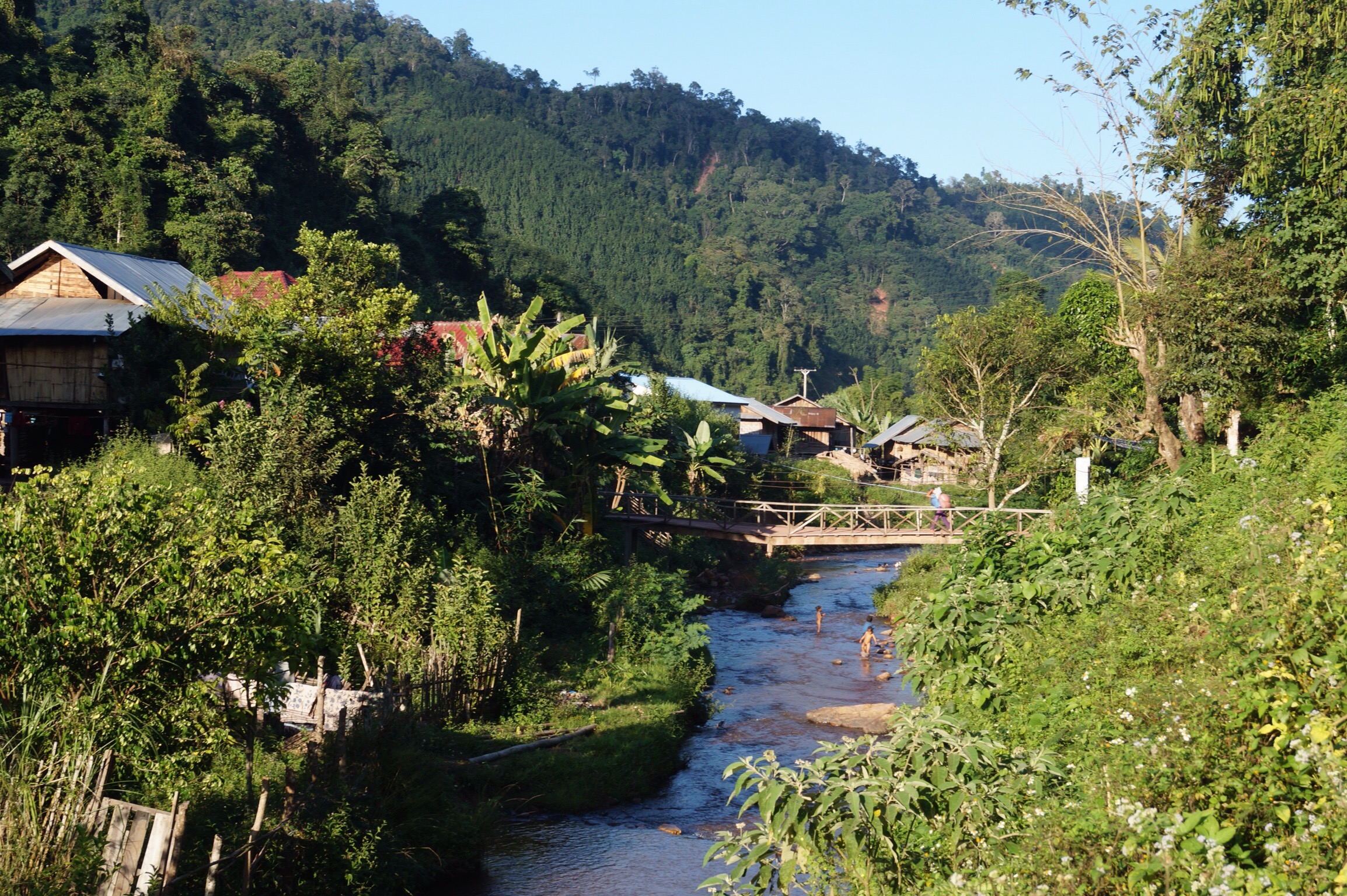
Earlier in the week, after a sad goodbye to my sister and Noel in Luang Prabang, we had headed to the hills. The road soon narrowed, twisted and climbed. However, unlike Cambodia the traffic was pretty light, so the driving wasn't too stressful. We turned off the main highway north to the village of Nong Khiaw. Surrounded by limestone khasts, jungle, rice paddies and caves with a scenic river running through it, it made for a lovely stop.
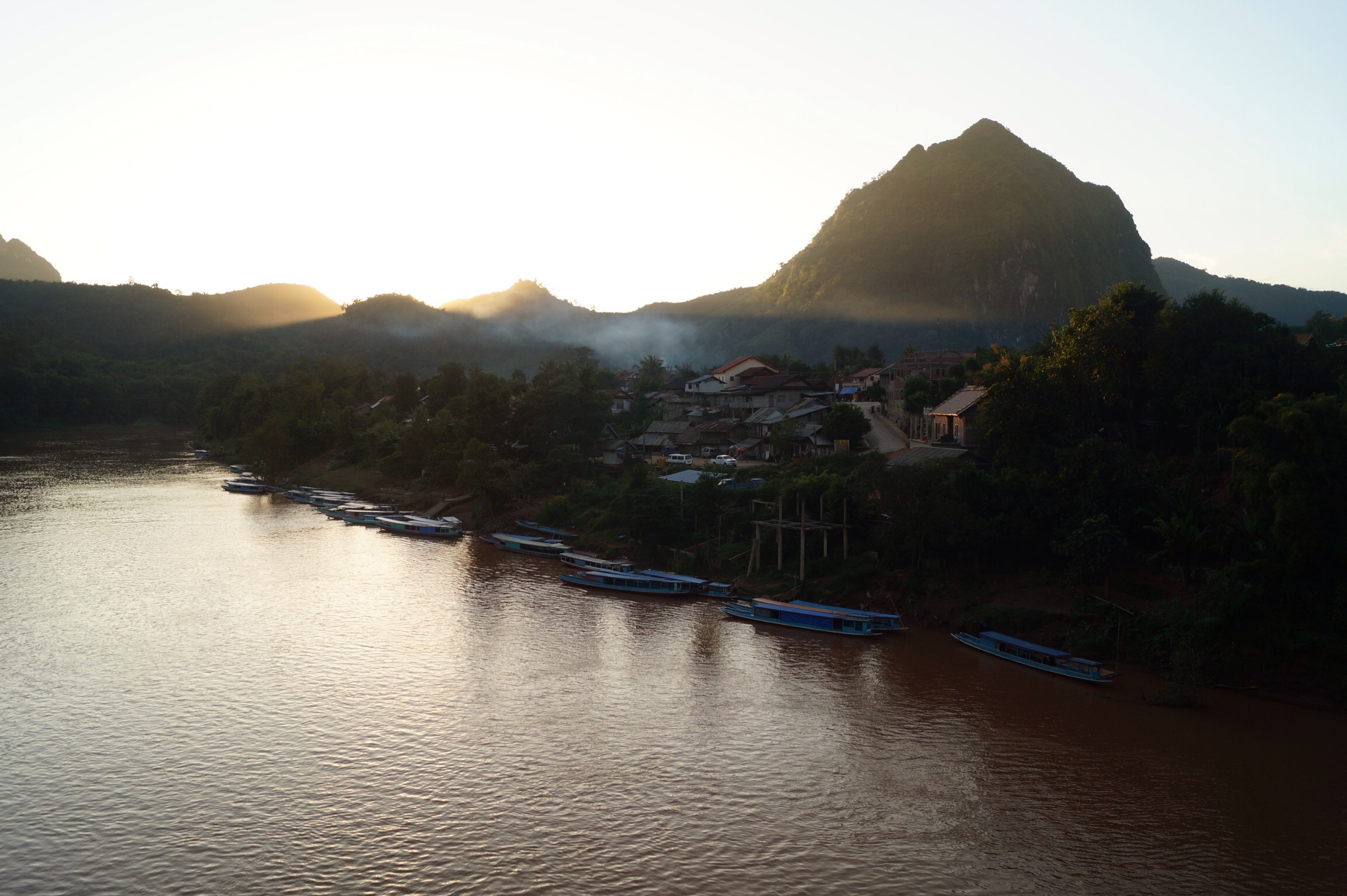

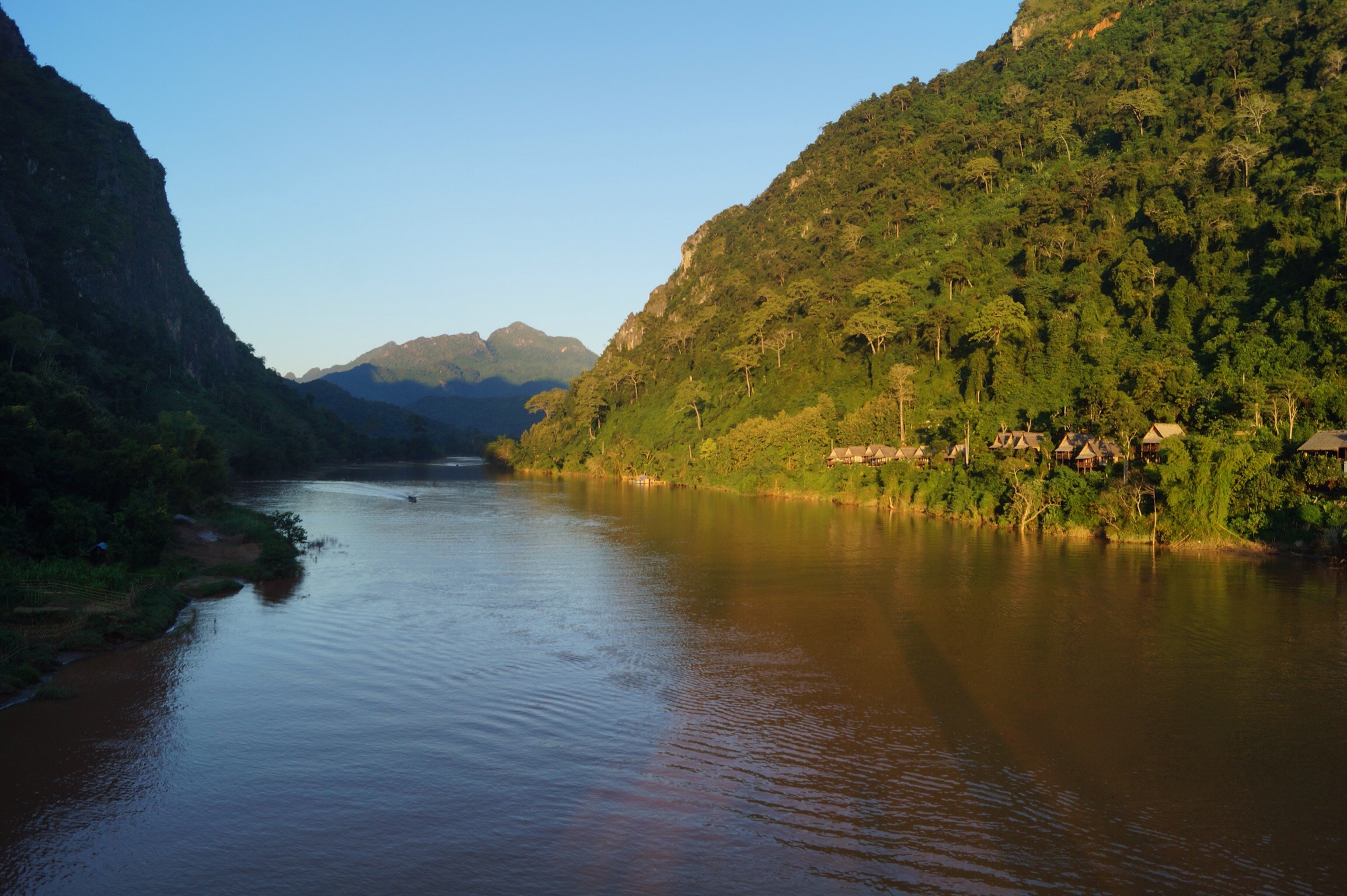
Outside the village, we climbed up to a cave where the local population and the communist provincial government had sheltered during 9 years of bombing they endured during the "Vietnam" war. Between 1964-1973 the Americans dropped 2,093,100 tons of bombs on Laos, even though it was technically a neutral country. The caves were pretty empty and I couldn't imagine people having to survive in it for so long for safety.
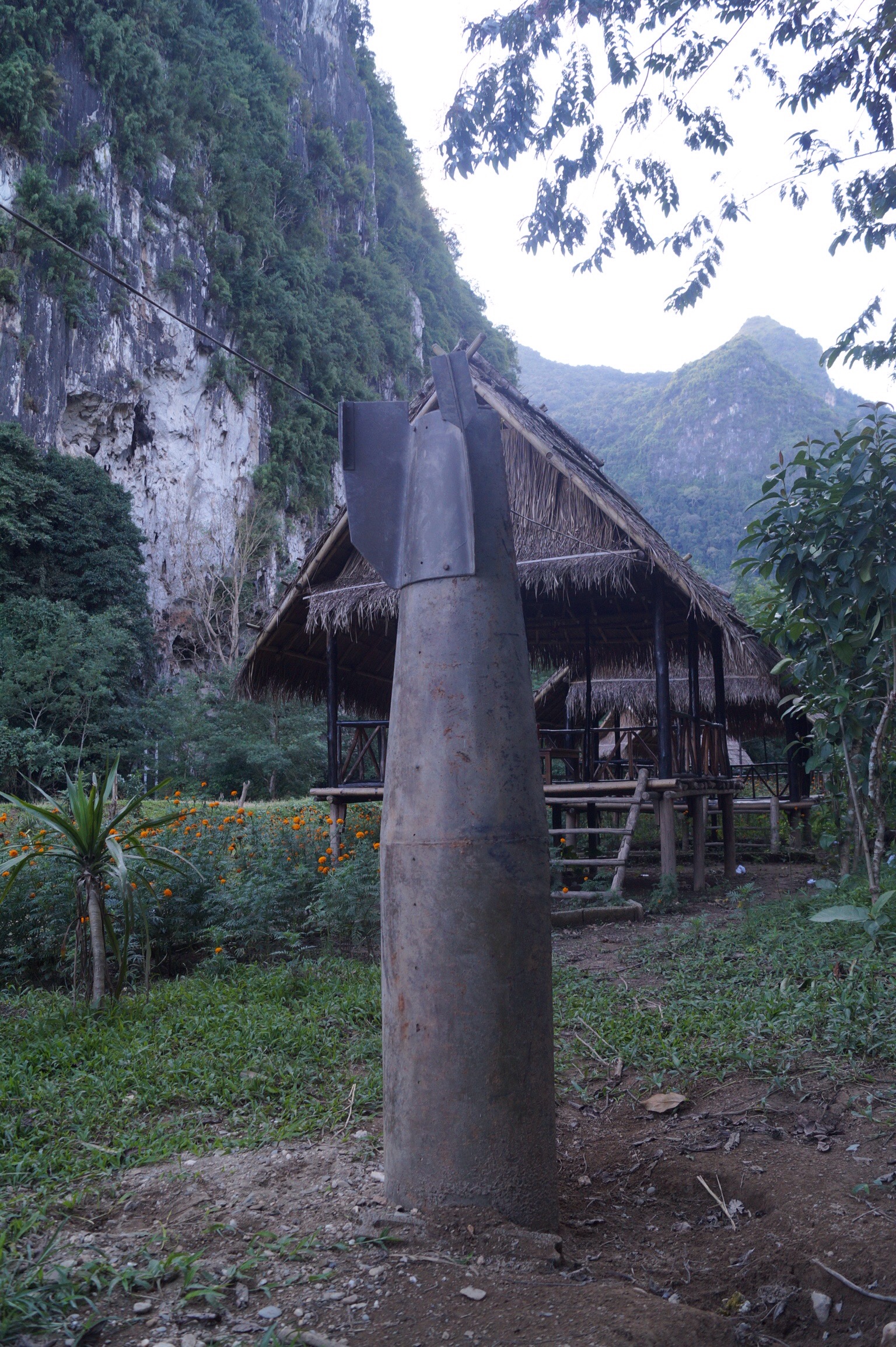
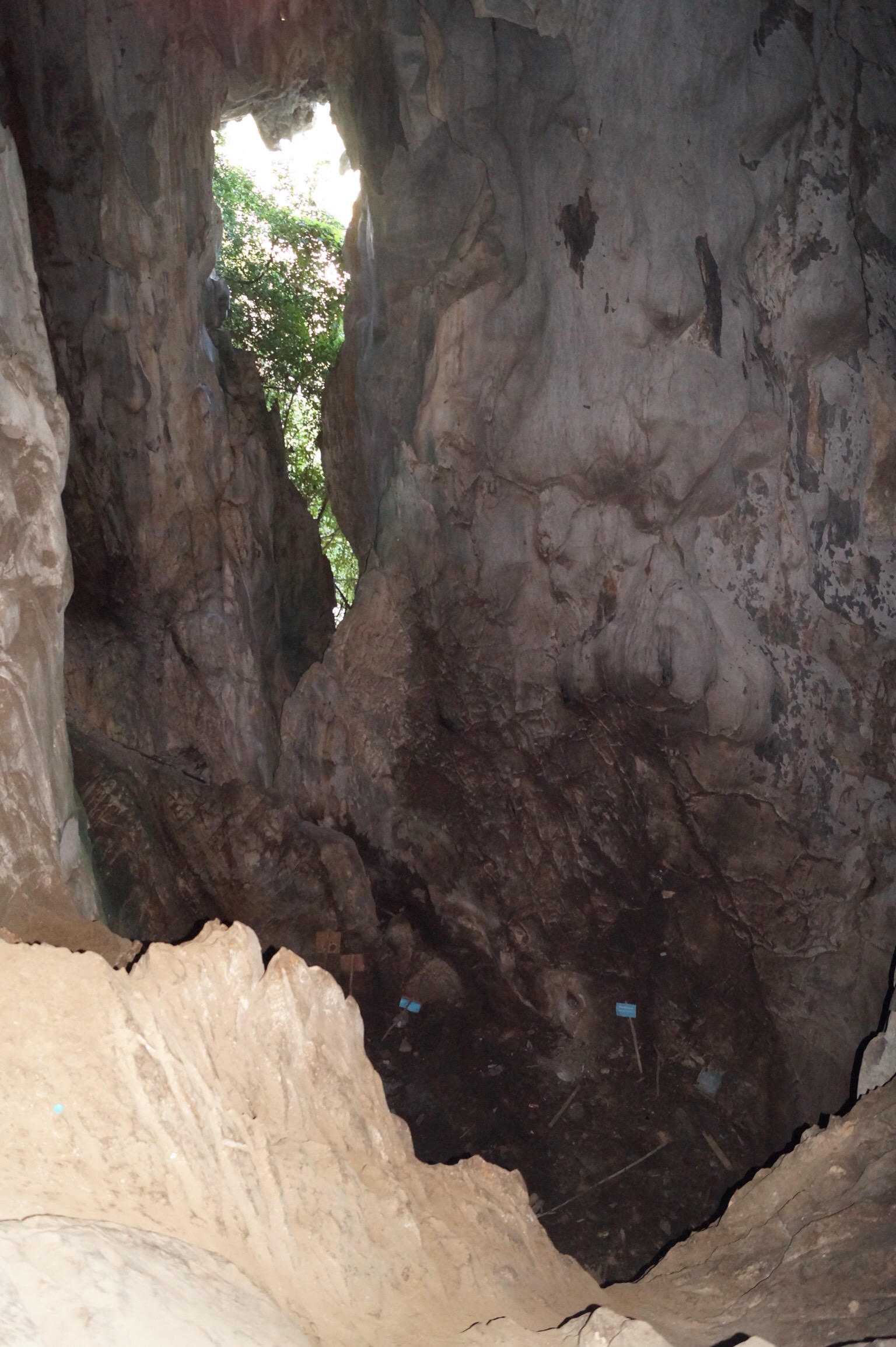
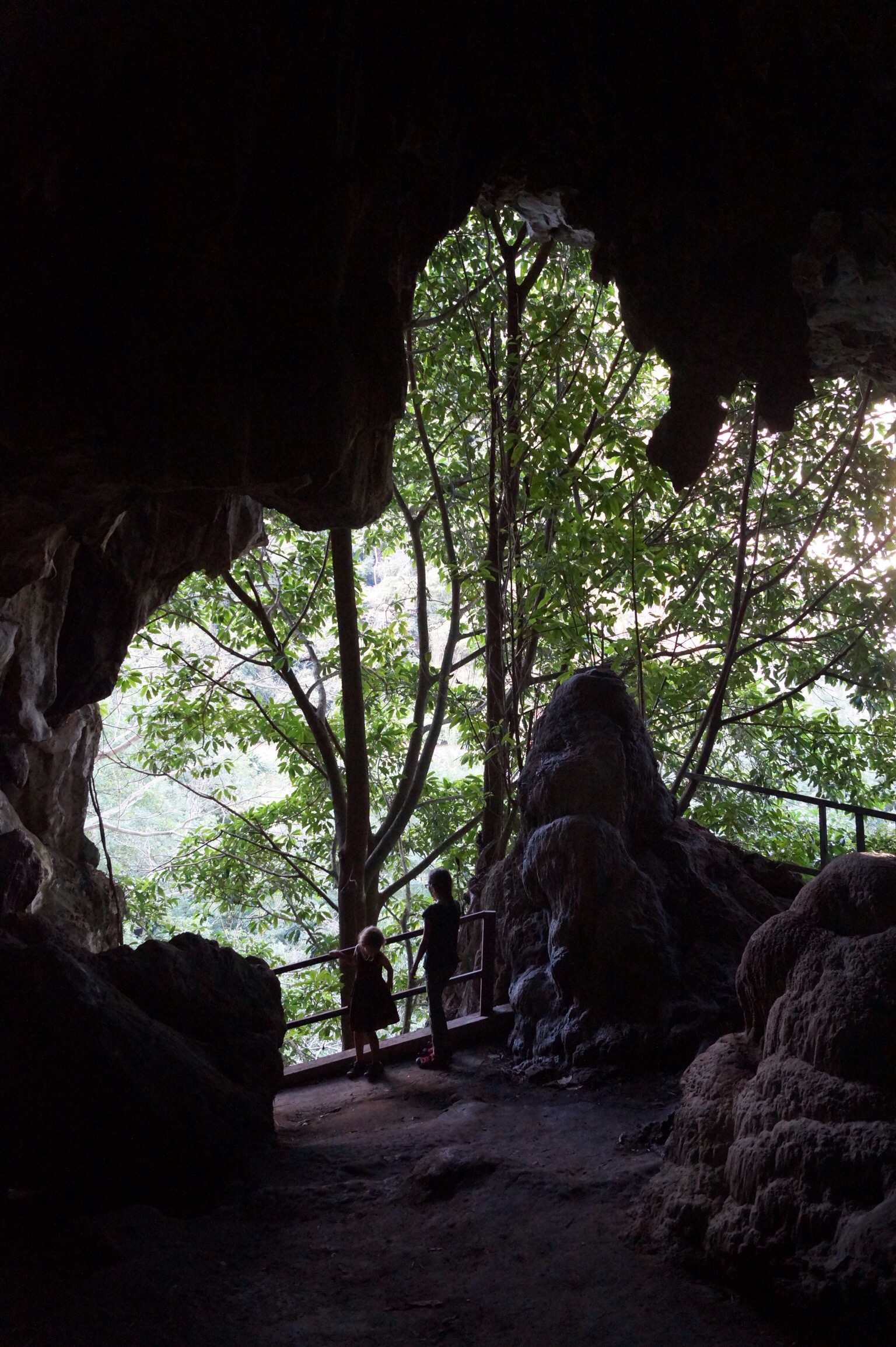
Early the next morning we rose in the mist and hiked up through the forest to a peak overlooking the valley. Sweating due to the steepness even in the cool air, we got to the top above the clouds just as they started to shift from the valley below.
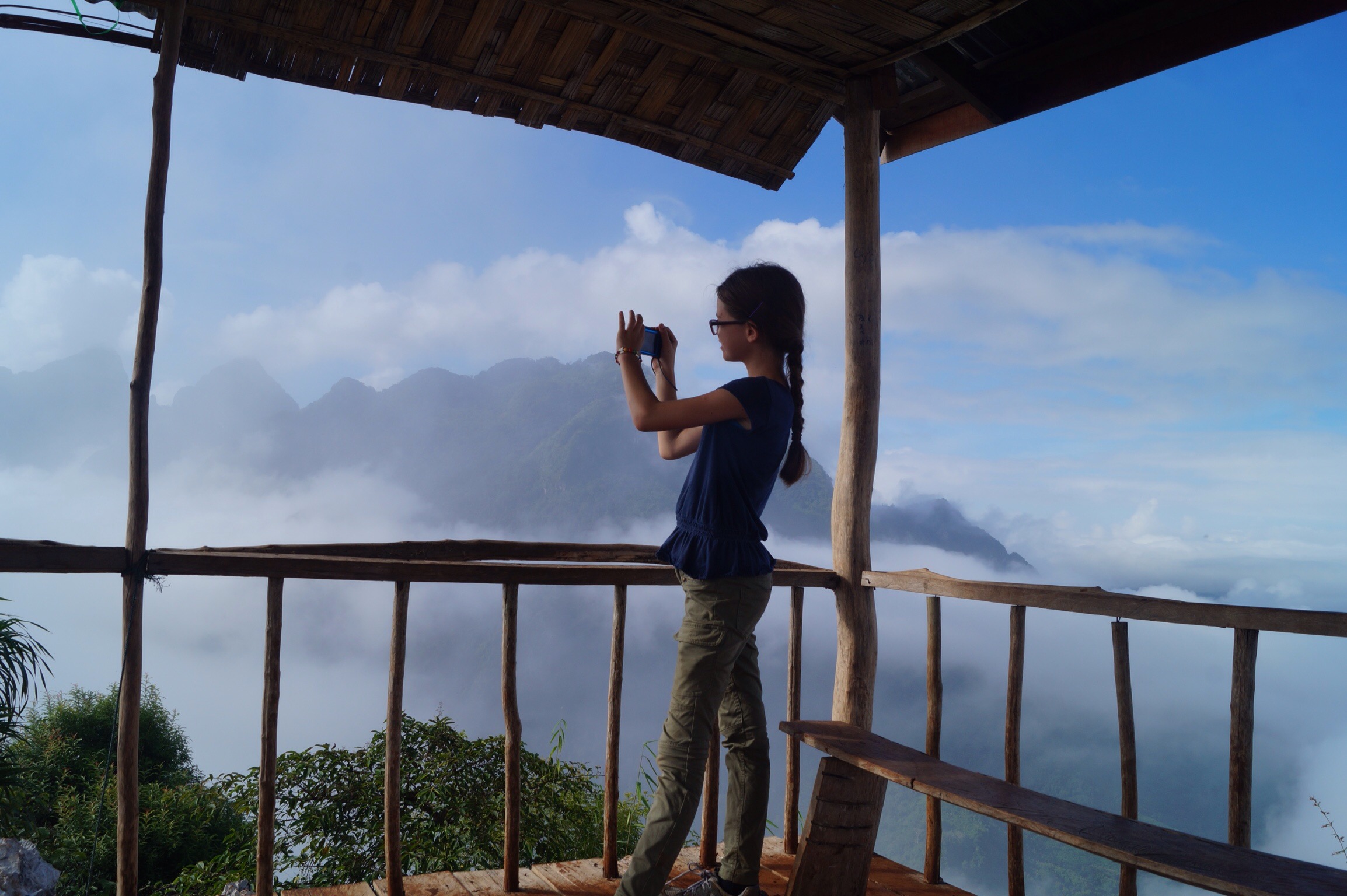

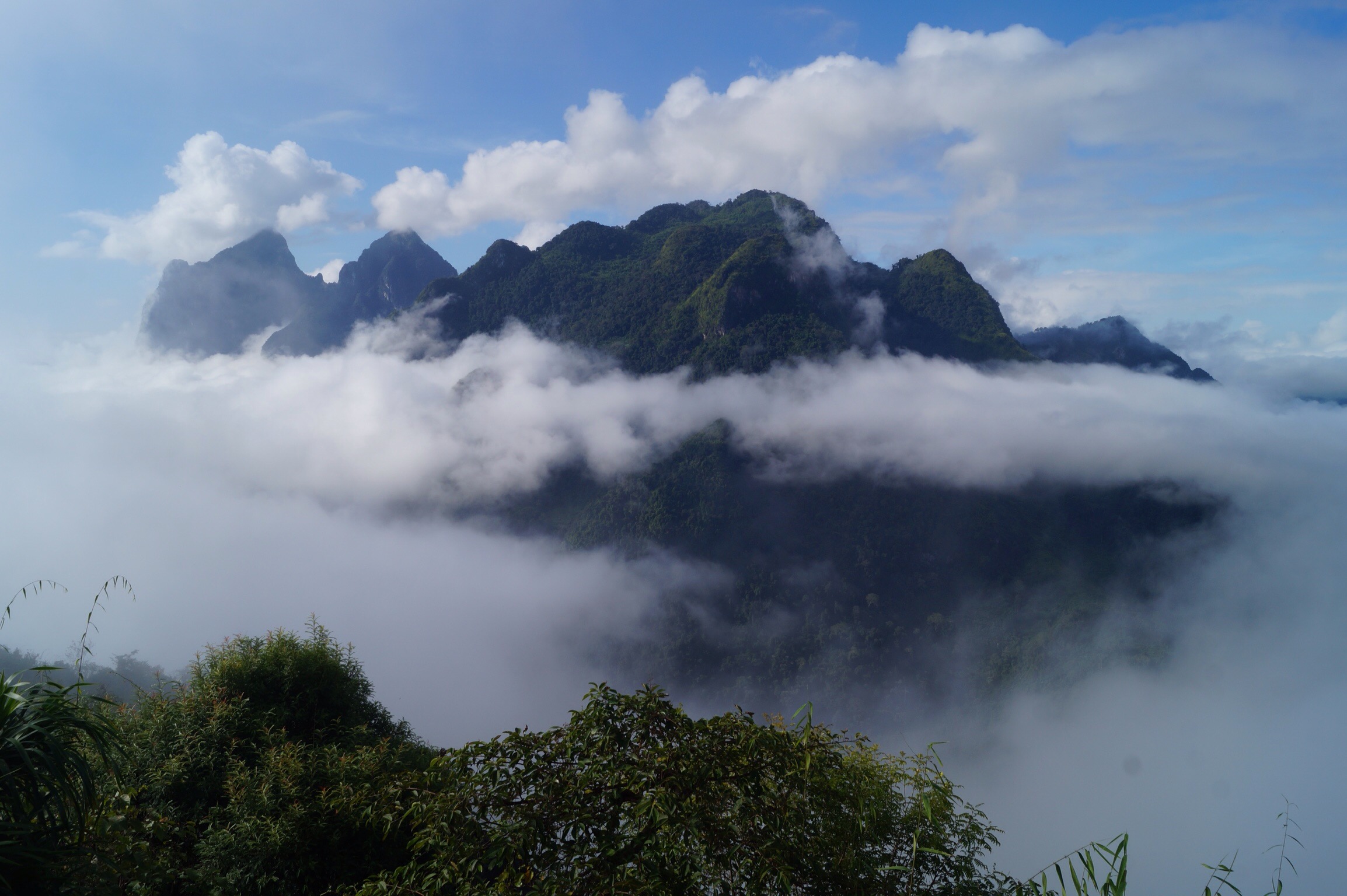
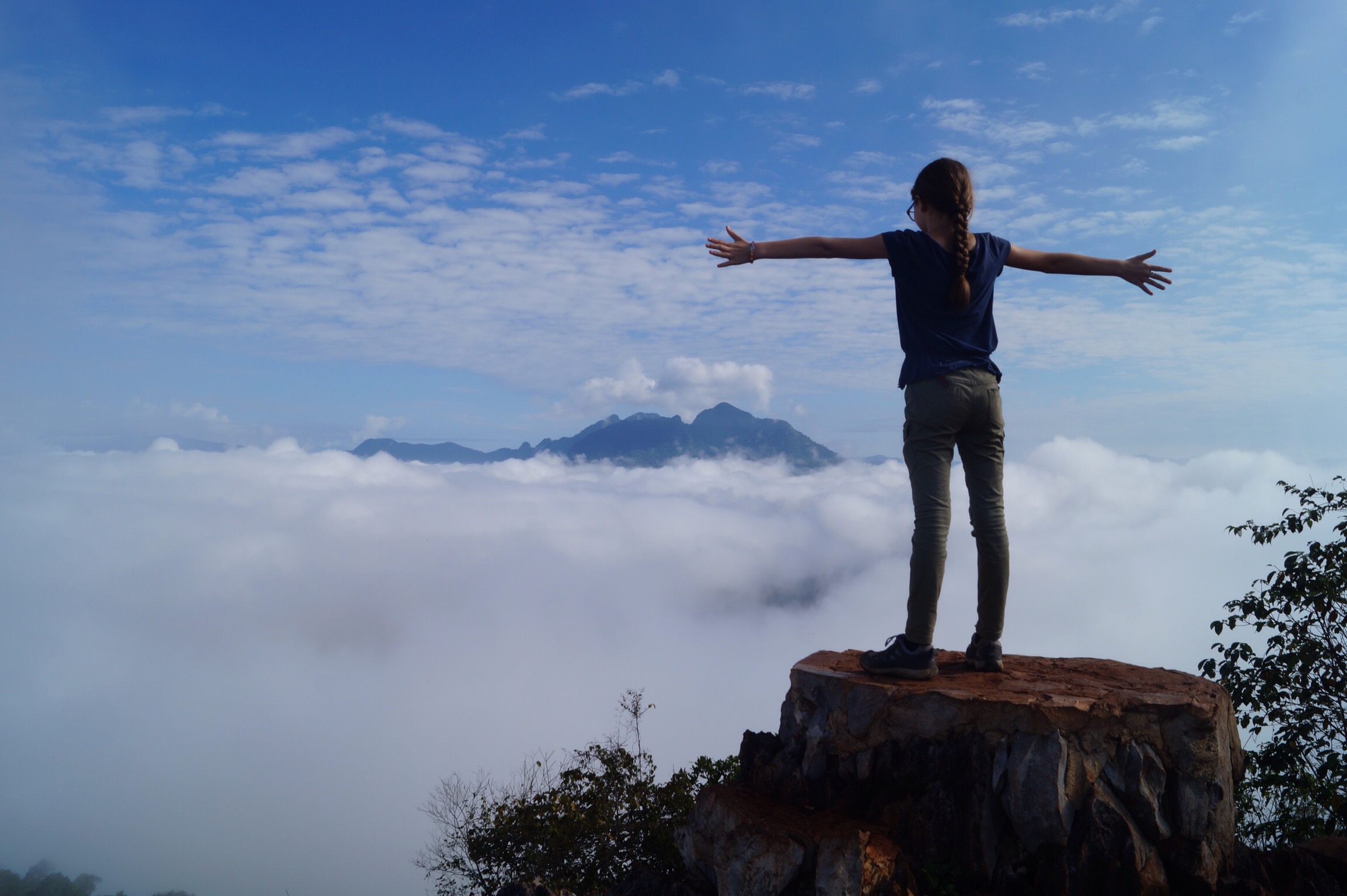
The drive north towards Luang Nam Tha was even more steep and winding but the road was good and pretty empty. As we reached the top of a ridge we noticed that the villages we passed through belonged to different hill tribes, with different style houses. Up here there are few rice paddies but people were out collecting vegetables from their fields; drying maize and foraging in the forest with baskets on their backs. There was a collection of interesting looking fungi available from the forest in the roadside market. The scenery was stunning below us.
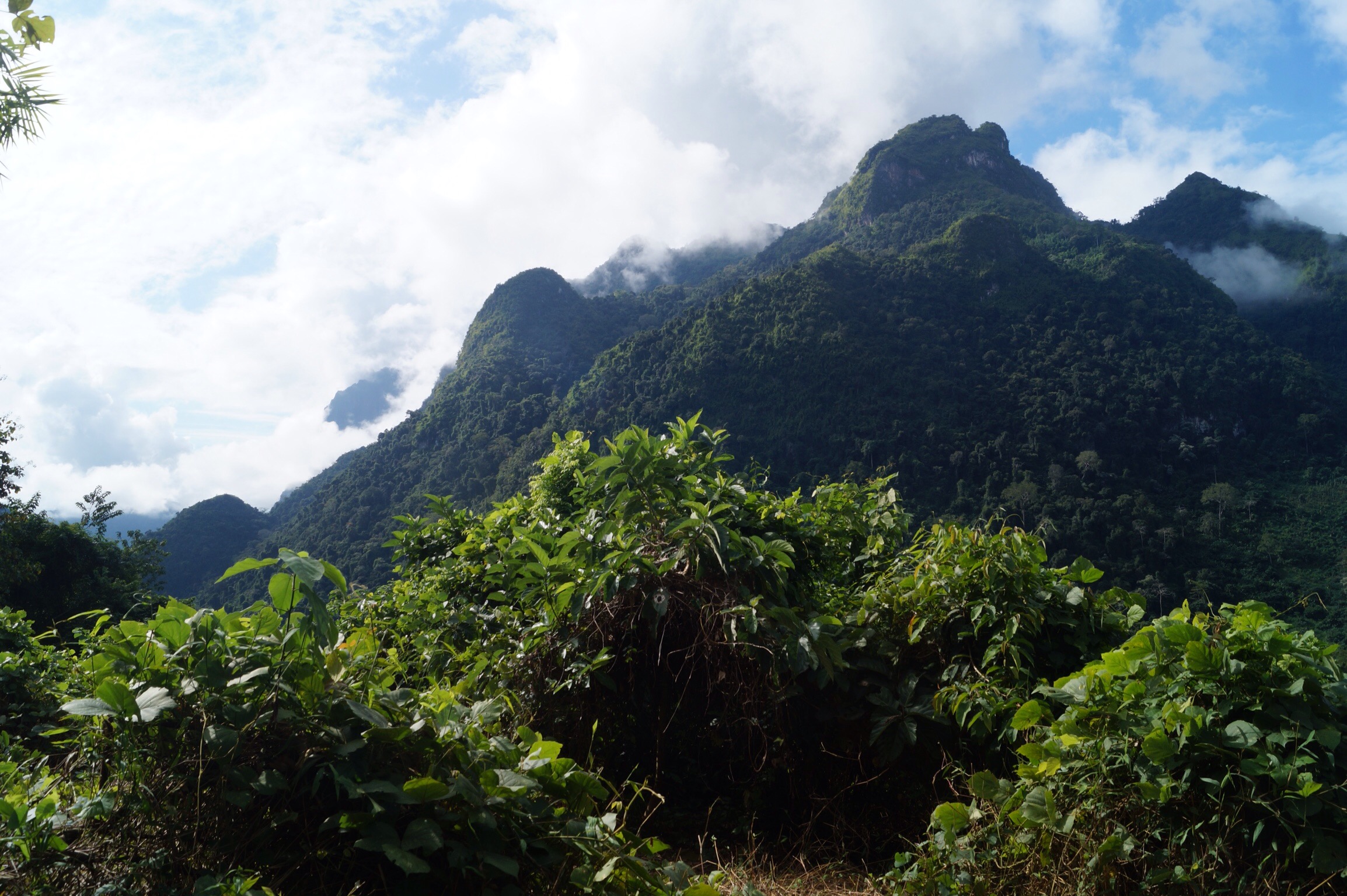
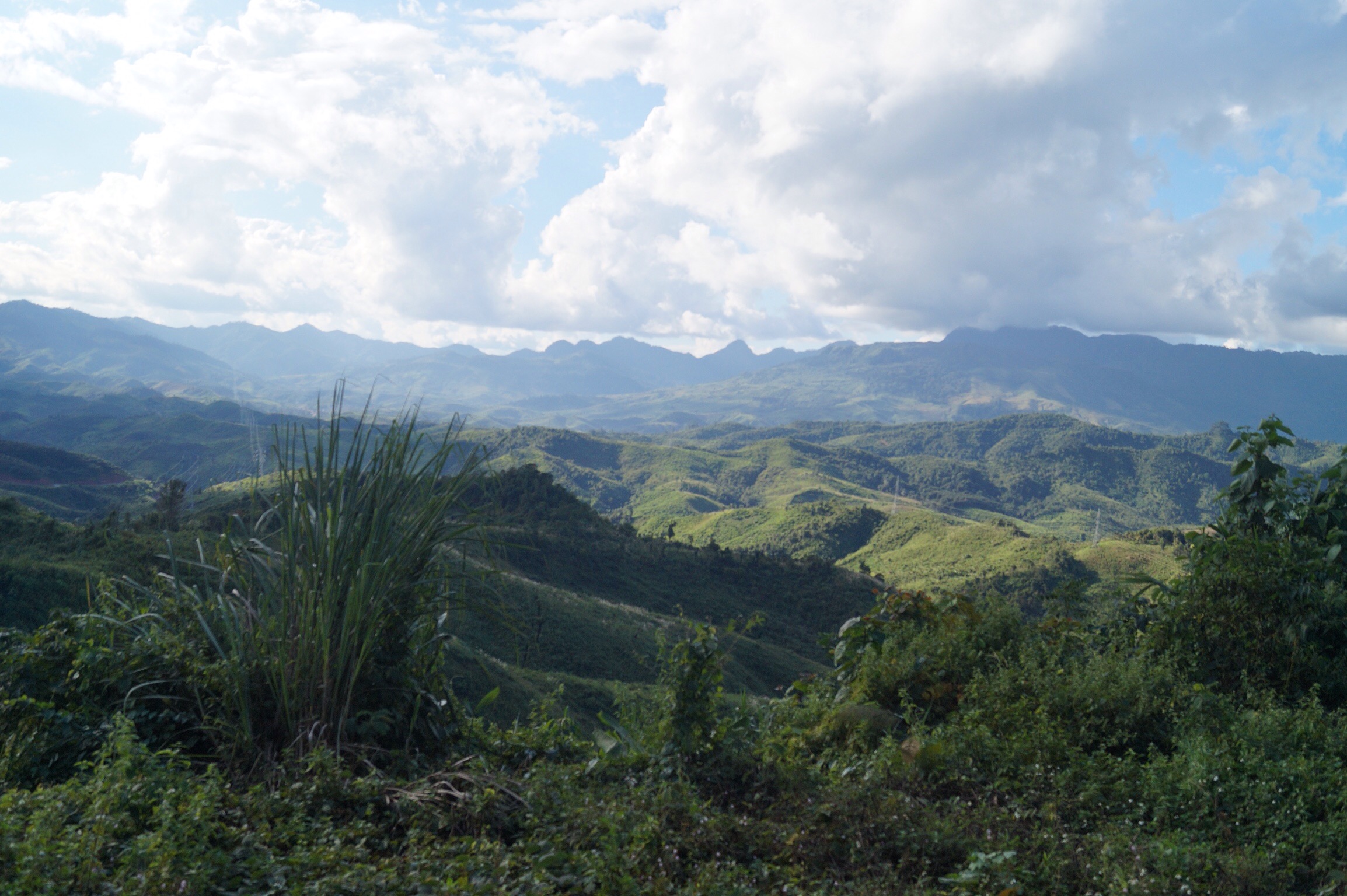
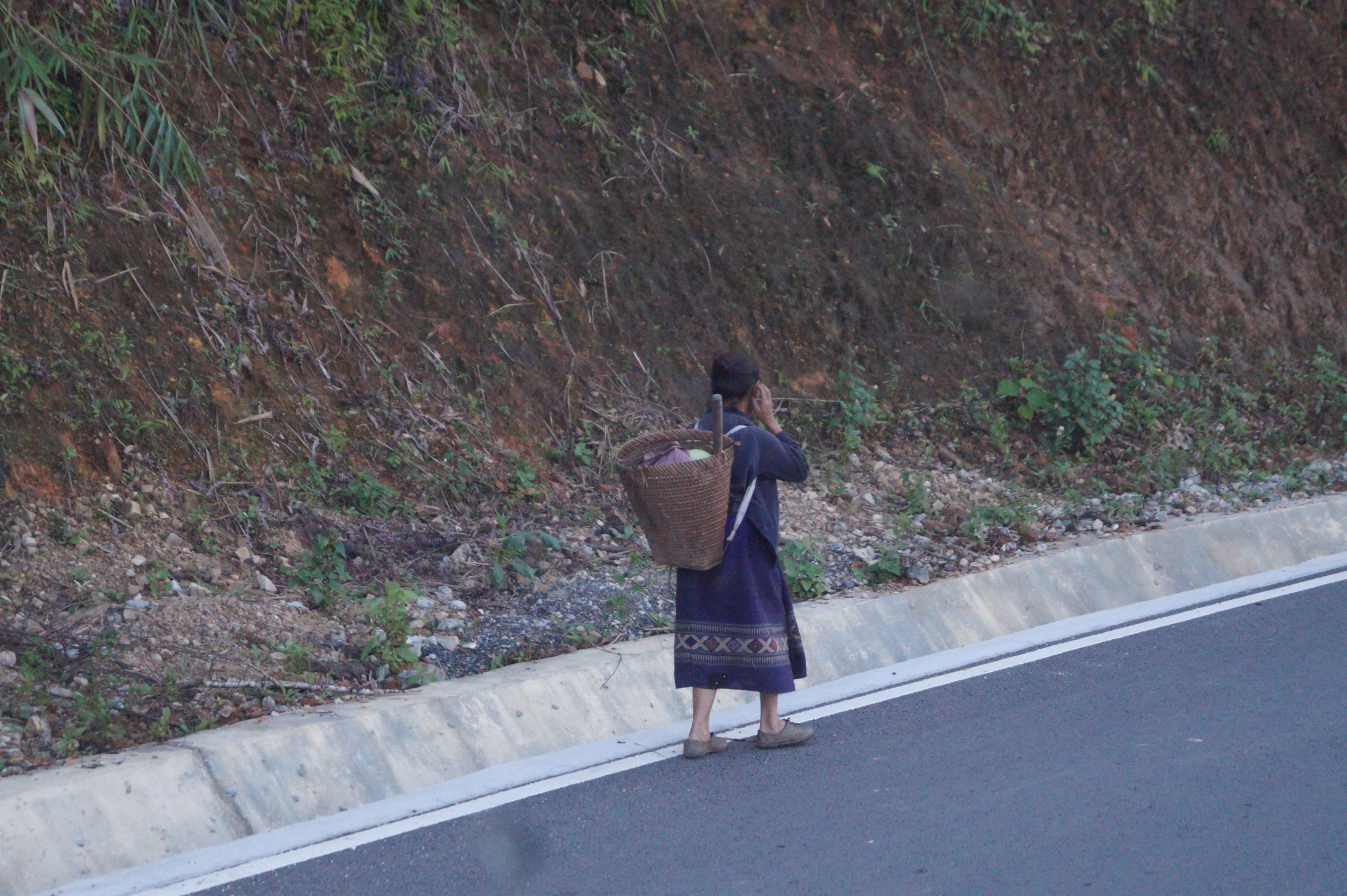
We broke our drive just outside the town of Udomxai, looking for a quiet spot for the night can be difficult in Asia. We saw a sign for a basic guesthouse with a big garden just as the sun was setting. Steve pulled up outside, the friendly older couple welcomed me in and with no common language we managed to communicate so we could camp in the garden for a small fee. It was a lovely quiet spot and as Lucy and I took a stroll along the road people said "Sabaidee" and smiled. A few came to look at the truck at a distance, said hello, then disappeared. We are finding Laoian people curious, friendly but quite shy. We had a similar experience in Nong Khiaw the night before, we ended up camping in a restaurant with Petang (Laoian bowls) courts. The local Petang league came for a few after work games, then disappeared into the quiet night. The next morning the owner showed the girls the tiny baby orphaned goats she had.
Leaving Luang Nam Tha after our trek we drove through more scenic hill tribe villages to Friendship Bridge Number 4 on the Thai border. We spent a night in the grounds of another basic guesthouse, more pantomiming to communicate on my part, to prepare for crossing the Mekong the next morning to Thailand.

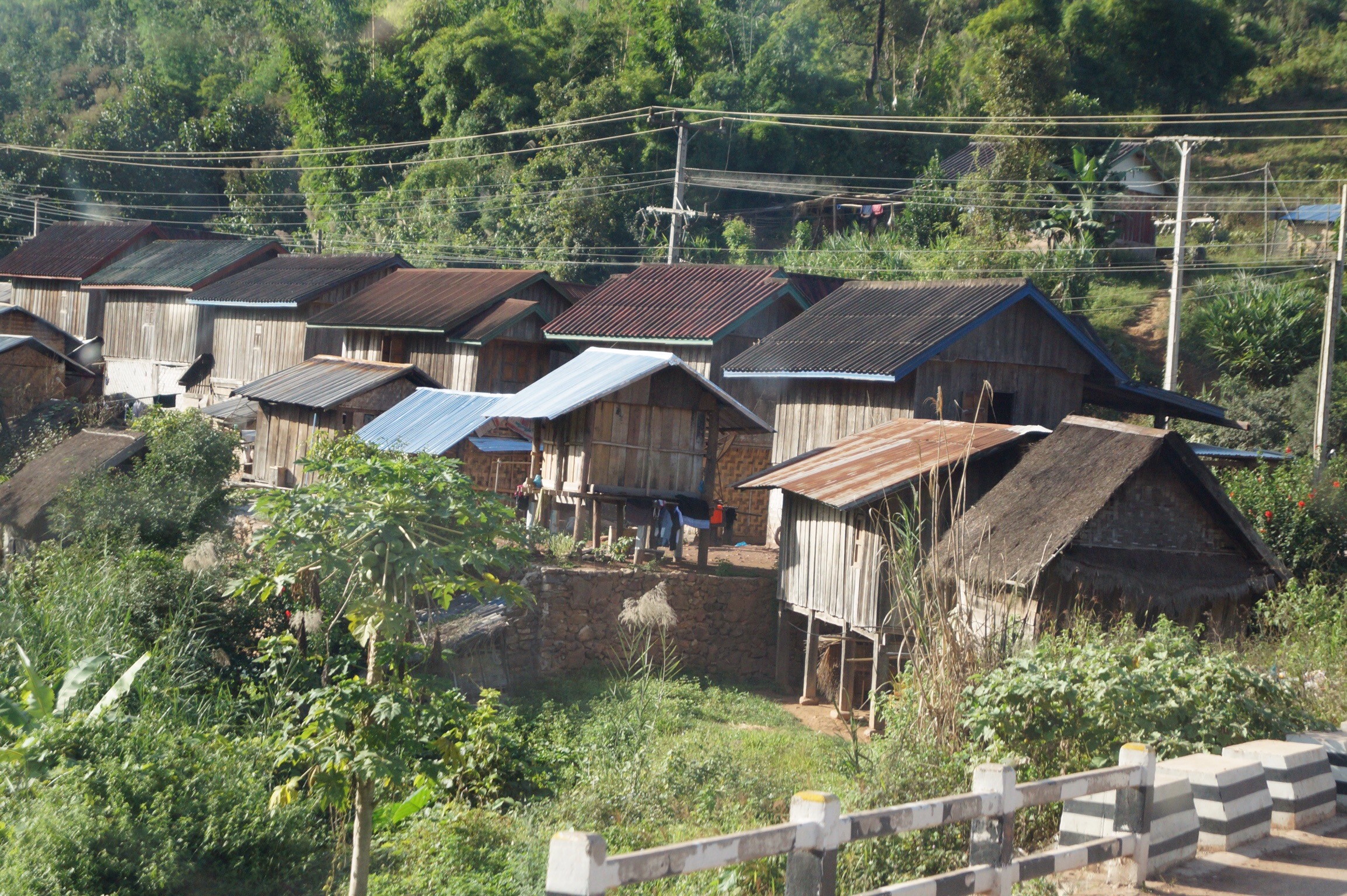

 We had stopped for lunch beside the river in a Khamu, a hill tribe, village in the middle of the jungle. As it was rice harvesting time, most of the villagers were working out in the fields but there were a few shy but friendly children about as it was the weekend. As part of an ecotourism community project, the village welcomes hikers with a guide to look around. The houses were raised on stilts with livestock underneath; chickens scratched around; and rice stores that looked like small houses were away from the houses in the vegetable gardens. The Khamu are animists and we were shown the bamboo sign they put up on the paths in, to show then the village is closed for ceremonies.
We had stopped for lunch beside the river in a Khamu, a hill tribe, village in the middle of the jungle. As it was rice harvesting time, most of the villagers were working out in the fields but there were a few shy but friendly children about as it was the weekend. As part of an ecotourism community project, the village welcomes hikers with a guide to look around. The houses were raised on stilts with livestock underneath; chickens scratched around; and rice stores that looked like small houses were away from the houses in the vegetable gardens. The Khamu are animists and we were shown the bamboo sign they put up on the paths in, to show then the village is closed for ceremonies.



 With our bellies full of sticky rice we continued our 16km trek through the primary rainforest. The girls did a great job walking on the muddy path and enjoyed chatting with the friendly young Australian couple that were with us. In the last kilometre back to the road, we heard giggling and chatting from the undergrowth, the universal sound of a group of teenagers hanging out. Eventually our paths merged and they slid out in front of us - literally, due to the muddy slope. They were bringing sacks of recently harvested rice from the village we had had lunch in. They were delighted to see a little blonde girl, after a bit of giggling and egging on as we all headed down the slope, they asked if they could take a picture with Lucy on a phone they had.
With our bellies full of sticky rice we continued our 16km trek through the primary rainforest. The girls did a great job walking on the muddy path and enjoyed chatting with the friendly young Australian couple that were with us. In the last kilometre back to the road, we heard giggling and chatting from the undergrowth, the universal sound of a group of teenagers hanging out. Eventually our paths merged and they slid out in front of us - literally, due to the muddy slope. They were bringing sacks of recently harvested rice from the village we had had lunch in. They were delighted to see a little blonde girl, after a bit of giggling and egging on as we all headed down the slope, they asked if they could take a picture with Lucy on a phone they had.



 Earlier in the week, after a sad goodbye to my sister and Noel in Luang Prabang, we had headed to the hills. The road soon narrowed, twisted and climbed. However, unlike Cambodia the traffic was pretty light, so the driving wasn't too stressful. We turned off the main highway north to the village of Nong Khiaw. Surrounded by limestone khasts, jungle, rice paddies and caves with a scenic river running through it, it made for a lovely stop.
Earlier in the week, after a sad goodbye to my sister and Noel in Luang Prabang, we had headed to the hills. The road soon narrowed, twisted and climbed. However, unlike Cambodia the traffic was pretty light, so the driving wasn't too stressful. We turned off the main highway north to the village of Nong Khiaw. Surrounded by limestone khasts, jungle, rice paddies and caves with a scenic river running through it, it made for a lovely stop.


 Outside the village, we climbed up to a cave where the local population and the communist provincial government had sheltered during 9 years of bombing they endured during the "Vietnam" war. Between 1964-1973 the Americans dropped 2,093,100 tons of bombs on Laos, even though it was technically a neutral country. The caves were pretty empty and I couldn't imagine people having to survive in it for so long for safety.
Outside the village, we climbed up to a cave where the local population and the communist provincial government had sheltered during 9 years of bombing they endured during the "Vietnam" war. Between 1964-1973 the Americans dropped 2,093,100 tons of bombs on Laos, even though it was technically a neutral country. The caves were pretty empty and I couldn't imagine people having to survive in it for so long for safety.


 Early the next morning we rose in the mist and hiked up through the forest to a peak overlooking the valley. Sweating due to the steepness even in the cool air, we got to the top above the clouds just as they started to shift from the valley below.
Early the next morning we rose in the mist and hiked up through the forest to a peak overlooking the valley. Sweating due to the steepness even in the cool air, we got to the top above the clouds just as they started to shift from the valley below.



 The drive north towards Luang Nam Tha was even more steep and winding but the road was good and pretty empty. As we reached the top of a ridge we noticed that the villages we passed through belonged to different hill tribes, with different style houses. Up here there are few rice paddies but people were out collecting vegetables from their fields; drying maize and foraging in the forest with baskets on their backs. There was a collection of interesting looking fungi available from the forest in the roadside market. The scenery was stunning below us.
The drive north towards Luang Nam Tha was even more steep and winding but the road was good and pretty empty. As we reached the top of a ridge we noticed that the villages we passed through belonged to different hill tribes, with different style houses. Up here there are few rice paddies but people were out collecting vegetables from their fields; drying maize and foraging in the forest with baskets on their backs. There was a collection of interesting looking fungi available from the forest in the roadside market. The scenery was stunning below us.


 We broke our drive just outside the town of Udomxai, looking for a quiet spot for the night can be difficult in Asia. We saw a sign for a basic guesthouse with a big garden just as the sun was setting. Steve pulled up outside, the friendly older couple welcomed me in and with no common language we managed to communicate so we could camp in the garden for a small fee. It was a lovely quiet spot and as Lucy and I took a stroll along the road people said "Sabaidee" and smiled. A few came to look at the truck at a distance, said hello, then disappeared. We are finding Laoian people curious, friendly but quite shy. We had a similar experience in Nong Khiaw the night before, we ended up camping in a restaurant with Petang (Laoian bowls) courts. The local Petang league came for a few after work games, then disappeared into the quiet night. The next morning the owner showed the girls the tiny baby orphaned goats she had.
Leaving Luang Nam Tha after our trek we drove through more scenic hill tribe villages to Friendship Bridge Number 4 on the Thai border. We spent a night in the grounds of another basic guesthouse, more pantomiming to communicate on my part, to prepare for crossing the Mekong the next morning to Thailand.
We broke our drive just outside the town of Udomxai, looking for a quiet spot for the night can be difficult in Asia. We saw a sign for a basic guesthouse with a big garden just as the sun was setting. Steve pulled up outside, the friendly older couple welcomed me in and with no common language we managed to communicate so we could camp in the garden for a small fee. It was a lovely quiet spot and as Lucy and I took a stroll along the road people said "Sabaidee" and smiled. A few came to look at the truck at a distance, said hello, then disappeared. We are finding Laoian people curious, friendly but quite shy. We had a similar experience in Nong Khiaw the night before, we ended up camping in a restaurant with Petang (Laoian bowls) courts. The local Petang league came for a few after work games, then disappeared into the quiet night. The next morning the owner showed the girls the tiny baby orphaned goats she had.
Leaving Luang Nam Tha after our trek we drove through more scenic hill tribe villages to Friendship Bridge Number 4 on the Thai border. We spent a night in the grounds of another basic guesthouse, more pantomiming to communicate on my part, to prepare for crossing the Mekong the next morning to Thailand.


Ah, did you learn to eat rice with your fingers?
Yes we did. Sticky rice is a lot easier as it sticks together, hence the name. You just take a chunk and squeeze it around some vegetables or meat and away you go. Tasty! Of course the kids loved an excuse where eating with your fingers was the right way to go.
You and Steve are amazing … i don’t think A and i could do the same adventure. one of us would not survive 😉
Hi Sharon,
Ha ha, don’t worry Steve and I definitely have our moments! We often say that the best thing about this trip is being together as a family so much and the worst thing about this trip is….being together as a family so much.
Love to you all in Prague
G